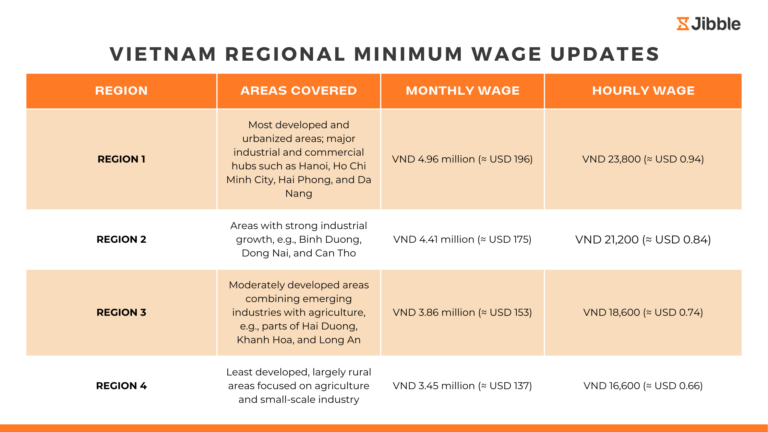Vietnam’s regional minimum wage effective from July 1, 2025

From July 1, 2025, Vietnam’s regional minimum wage was officially applied across 34 provinces and centrally run cities following a nationwide administrative restructuring, as reported by Vietnam Briefing.
In June 2025, the National Assembly approved a resolution reducing the number of provinces and centrally governed cities from 63 to 34.
Although the minimum wage levels remained unchanged, a new two-level government model was introduced.
Under this model, districts were abolished, and minimum wages were aligned more directly with communes (rural villages) and wards (urban neighborhoods).
Prior to this, the government introduced a new basic salary and updated minimum wage levels, both of which took effect on July 1, 2024.
These changes also raised the maximum salary thresholds used to calculate contributions for social insurance, health insurance, and unemployment insurance, ensuring that benefits and contributions reflected the updated wage levels.
Updates to the Regional Minimum Wages
The regional minimum wage in Vietnam sets the lowest legal pay that employers can provide and serves as a benchmark for salary negotiations.
It applies to all employees under labor contracts, including those in enterprises, cooperatives, farms, households, and other local organizations, as well as staff working for foreign entities operating in the country.
Vietnam is divided into four wage regions, each reflecting local economic conditions and living costs.
These minimum wage levels also affect contributions calculated using the statutory pay rate, including social insurance (SI), health insurance (HI), union fees, and unemployment insurance (UI).
Together, these contributions are often referred to as “SHUI” and influence the benefits received through social insurance.
Social Insurance and Benefit Contribution Limits
On July 1, 2024, the statutory pay rate (the fixed government benchmark used to calculate benefits and caps) was raised to VND 2.34 million (≈ USD 93), up from VND 1.8 million (≈ USD 72).
As a result, the maximum trade union fee salary used for calculating social insurance, health insurance, and union fees was set at VND 46.8 million (≈ USD 1,860), which is 20 times the statutory rate.
Meanwhile, the maximum salary used for calculating unemployment insurance was tied to the regional minimum wage:
- Region 1: previously VND 93.6 million (≈ USD 3,720), increased to VND 99.2 million (≈ USD 3,940)
- Region 2: previously VND 83.2 million (≈ USD 3,300), increased to VND 88.2 million (≈ USD 3,510)
- Region 3: previously VND 72.8 million (≈ USD 2,890), increased to VND 77.2 million (≈ USD 3,070)
- Region 4: previously VND 65.0 million (≈ USD 2,580), increased to VND 69.0 million (≈ USD 2,740)
Even if higher salaries were paid, contributions to insurance and union funds were capped at these levels.
Minimum Wage Trends
Prior to this regional minimum wage change, a 6 percent wage increase was applied on July 1, 2024, to help workers meet rising living costs. For more than a decade, wage increases had traditionally been implemented on January 1 each year.
Due to the COVID-19 pandemic, however, and global economic fluctuations, the last two adjustments were shifted to July 1.
Related Content:
California cities raise minimum wage from July 1
British Columbia increases its minimum wage to $17.85
Chicago’s minimum wage to increase amid new labor laws
Bank of America raises minimum wage to $24 per hour in U.S. Locations




